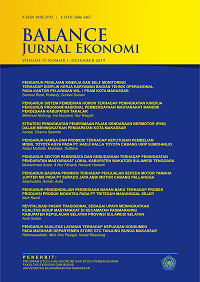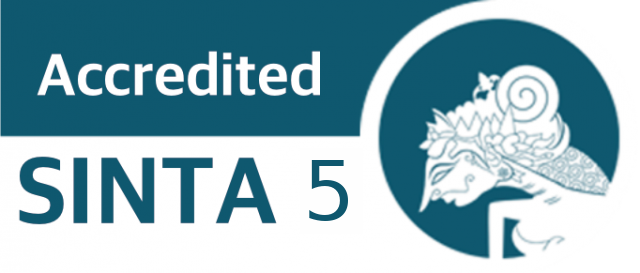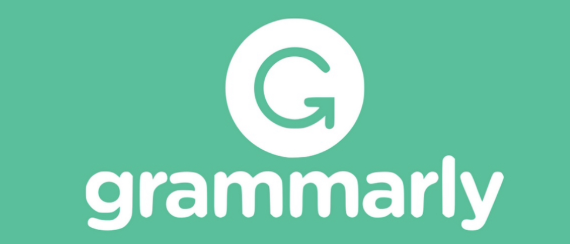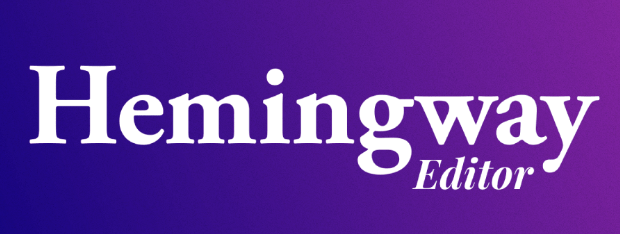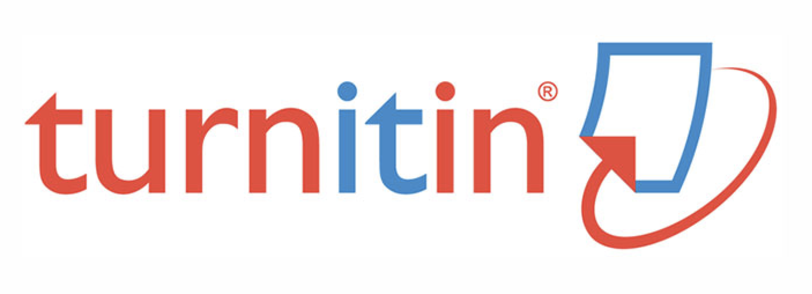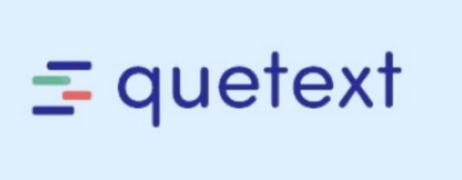The Impact of Direct Cash Assistance (BLT) on Community Welfare
DOI: https://doi.org/10.26618/jeb.v20i2.16675
Direct Cash Assistance, Community Welfare
Abstract
The aim of this research is to determine the impact of Direct Cash Assistance (BLT) on the welfare of the community in Pa'rappunganta Village, North Polongbangkeng District, Takalar Regency. This research is qualitative in nature with data obtained from informants through observation and interview methods. The data used includes primary data originating directly from the community and secondary data obtained from official documents at the research location. Direct Cash Assistance (BLT) is a form of government social intervention that aims to help poor people, especially in meeting their basic needs. Based on research results, BLT has a significant role in alleviating the economic burden on poor communities in the short term. However, the impact of BLT is not strong enough to improve the quality of life of the poor as a whole, let alone reduce the poverty rate in the region. This is due to the temporary and unsustainable nature of the BLT program. This program only provides a temporary solution without providing opportunities for people to get out of poverty systematically. Apart from that, there are obstacles in implementing the program, such as unequal distribution and lack of supervision, which causes the effectiveness of this program to be limited. This research concludes that although BLT helps reduce temporary economic pressure, more integrated and sustainable policies are needed to achieve long-term goals of increasing welfare and alleviating poverty in Pa'rappunganta Village. Community empowerment programs such as skills training and increasing access to employment opportunities can be a more effective alternative solution.
References
AkibIrwan.(2016). BLT (Studi Kasus Pada Masyarakat di Kelurahan Karema Kecamatan Mamuju Kabupaten Mamuju). Jurnal Jurnal Equilibrium Pendidikan Sosiologi Universitas Muhammadiyah Makassar, e-2477-0221 p-2339-201.
Astuti Puji Dyah Rochmah Nur, et all. (2016). Sistem penentuan Penerima BLT (BLT) dengan Metode Anality calHirarchy Process. Jurnal Informatika, Vol 2, No. 2, Juli 2008.
Badan Pusat Statistik , 2019. Jumlah dan Persentase Penduduk Miskin Di Indonesia , 2006-2019.
Dewi Ratna dan Andrianus Vulqony Habib. (2024). Analisis Pengaruh Kebijakan BLT (BLT) Terhadap Kemiskinan di Indonesia Periode 2005-2015. Jurnal Menara Ilmu, Vol.XVNo. 02.
Elinpike, (2010), Dampak BLT (BLT) Terhadap Kesejahteraan Masyarakat Studi Kasus : Kota Bandung, Blog Elinpike.
Harwidiansyah. (2011). Dampak BLT Terhadap Kesejahteraan Masyarakat Desa Maccini Baji Kecamatan Bajeng Kabupaten Gowa. Proposal Fakultas Dakwa dan Komunikasi Universitas Islam Negeri Alauddin Makassar.
Iping Baso. (2020). Perlindungan Sosial Melalui Kebijakan Program BLT (BLT) di Era Pandemi Covid-19: Tinjauan Perspektif Ekonomi dan Sosial. Available Online: https://dinastirev.org/JMPIS.
Iqbal Hasbi. (2008). Implementasi kebijakan Program BLT Tahun 2008 di Kabupaten Kudus.Tesis Magister Ilmu Administrasi Program Pasca sarjana Universitas Di ponegoro.
Izzati et. al., (2020).Jumlah Penerima BLT dan Anggaran yang Di keluarkan oleh Pemerintah SetiapTahunnya, 2005-2015.
Marini Dian. (2015). Dampak Penyaluran BLT (BLT) Terhadap Masyarakat Miskin di Desa Perawang Barat Kecamatan Tualang Kabupaten Siak.Jurnal FISIP, Vol. 2 No. 1.
Maun Fernando ErflyCarly.(2020). Efektivitas BLT Dana Desa Bagi Masyarakat MiskinTerkena Dampak Covid-19 Di DesaTalaitad
Kecamatan Tareran Kabupaten Minahasa Selatan,.Mahasiswa Program Studi Ilmu Pemerintahan FISIPUNSRAT.
Mayasari Azizah Nur. (2020). Persepsi masyarakat Terhadap Manfaat Penyaluran BLT (BLT-DD) Dalam Upaya Membantu Perekonomian masyarakat Akibat Covid-19 (Studi penelitian di Kecamatan Balong Kabupaten Ponorogo. Proposal Ilmu Pemerintahan fakultas Ilmu Sosial dan Politik Universitas Muhammadiyah Ponorogo.
Sari Rahma Shasha.(2018). Analisis Program BLT Dengan Metode Analisis Hirarki Proses di Kabupaten Wonogiri.Proposal Ilmu Ekonomi Studi Pembangunan Fakultas Ekonomi dan Bisnis Universitas Muhammadiyah Surakarta.
Undang-Undang Nomor 11 Tahun 2009 Tentang Kesejahteraan Sosial, Pasal 14
Undang-Undang Dasar Republik Indonesia 1945 Pasal 34 ayat 1 dan ayat

